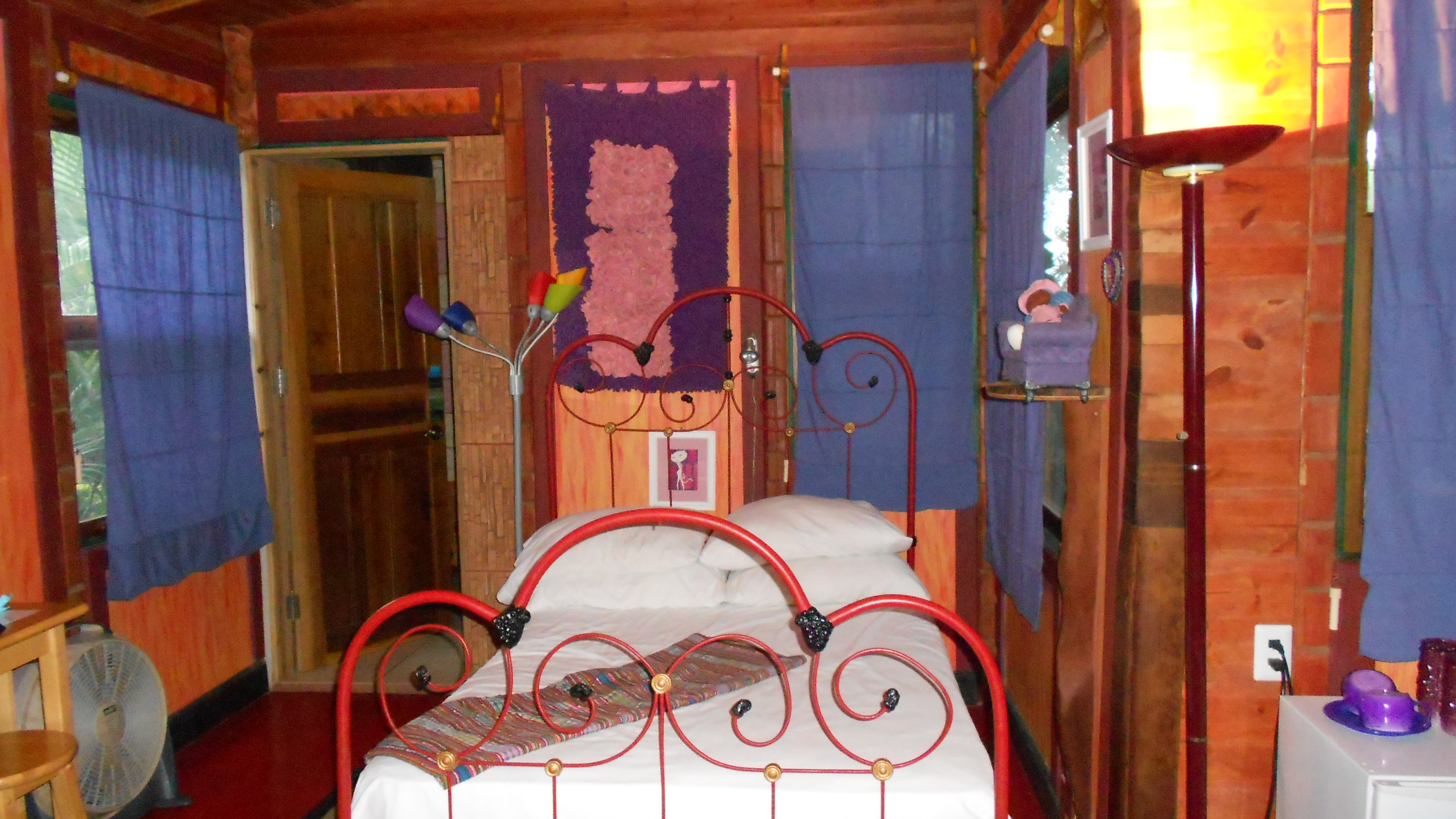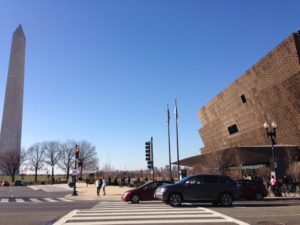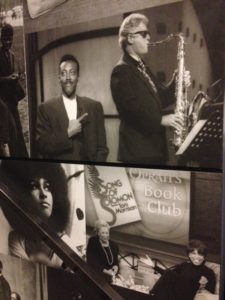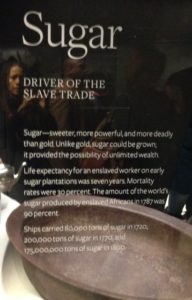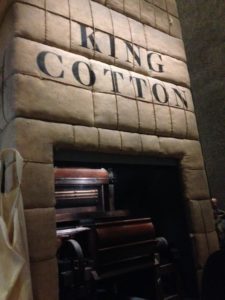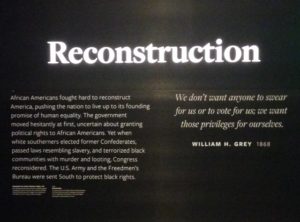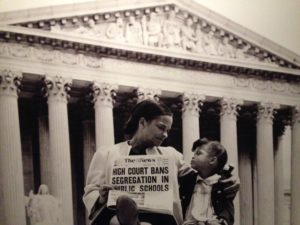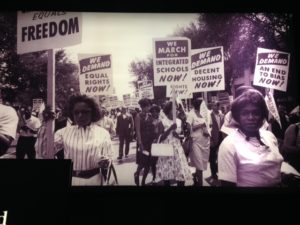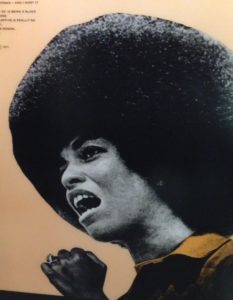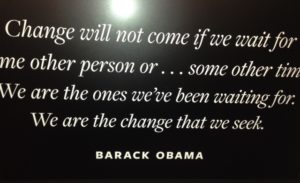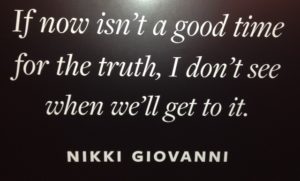As we approached the African American museum, I thought of an inverted step pyramid. My sister informed me that the design was inspired by an African headdress. Whichever the case, I loved the stylish modernity of this ancient shape.
The first time I’d ever visited the Washington monument as a child, we only celebrated Black History Week. Now, we had Black History month and the Washington monument served as good landmark for the African American museum. We were very optimistic about our wait time since there was no line at the door.
In fact, the woman at the information desk had told us that we would have to spend 22 hours to see everything. The four upper levels were dedicated to some aspect of community and culture. I knew I wouldn’t be able to see everything. I especially wanted to see the more historical parts, which were housed three floors below the main level. We only waited 35 minutes, versus 60, to “go back in time” as we descended into the 1400s by elevator.
I snapped a picture of this photo collage that decorated the stairs. I definitely remember when, then presidential candidate, Bill Clinton, played his sax on the Arsenio Hall show back when I was a senior in college; I hadn’t seen the Oprah episode when she interviewed writer Toni Morrison; nor was I alive when actress Marsha Hunt made the iconic Afro statement in the stage production of “Hair.”
The first of many ironies I discovered involved sugar. Slave labor produced 90% of the world’s sugar in 1787. That “ingredient” still plagues many black and working poor communities today, from the contribution to a bad diet to diabetes.
I spent far more time reading the captions and blurbs aloud, which were scattered among the artifacts and photos, than taking photos of my own. This was mainly to help my vision-impaired sister, but also, I wanted to be more engaged in the exhibit than to document it. So, we passed through several areas dealing with the transportation of slaves and I was surprised that Portugal, at an estimated 5.8 million slaves, had transported the most.
My sister thought that made perfect sense because DNA testing showed part of our ancestry was Portuguese. As if it was not horrifying enough to be subjected to the harsh conditions of the Middle Passage, but to then be raped and impregnated as well.
Cotton, one of the slave labor cash crops that my family, black friends, and I often use as the motivation to succeed in life so we won’t have to pick it to survive, had its shrine as well.
The next level up in the gallery dealt with post slavery. Just as I was telling my family that the first rise of the klan occurred during this time period, we saw a section dedicated to that group. The exhibit didn’t go into depth about how the newly freed slaves caused poor whites to lose status.
One of my favorite pictures was of a mother and daughter who sat on the court steps with a newspaper, which had screaming headlines about desegregating schools.
Inevitably, everyone desires the American dream of freedom to thrive in this land of opportunity; so we black women have also fought to be heard.
One of many powerful black women, Angela Davis has spent her entire life as an activist educator and writer. I use the word “activist” rather than “radical” because I don’t think there’s anything radical about wanting to be free. That’s just common sense, for which some people are feared and given negative labels.
Just to prove how I was more invested in experiencing my visit than making a photographic record of it, I inadvertently chopped off some of Obama’s quote, but I’ve typed it in its entirety here: “Change will not come if we wait for some other person or…some other time. We are the ones we’ve been waiting for. We are the change that we seek.”
That statement resonated with me because it dovetails beautifully with both my independent nature and my newfound desire to remain on the right side of natural selection.The only thing I’d add to Ms. Giovanni’s statement is, “The worse person to lie to is yourself.” Even though I’m an analytical person, I’m just as prone to “confirmation bias” as anyone else. That’s when it’s very useful to keep my eyes on the prize and strive for as much greatness as I can, given the situation.

